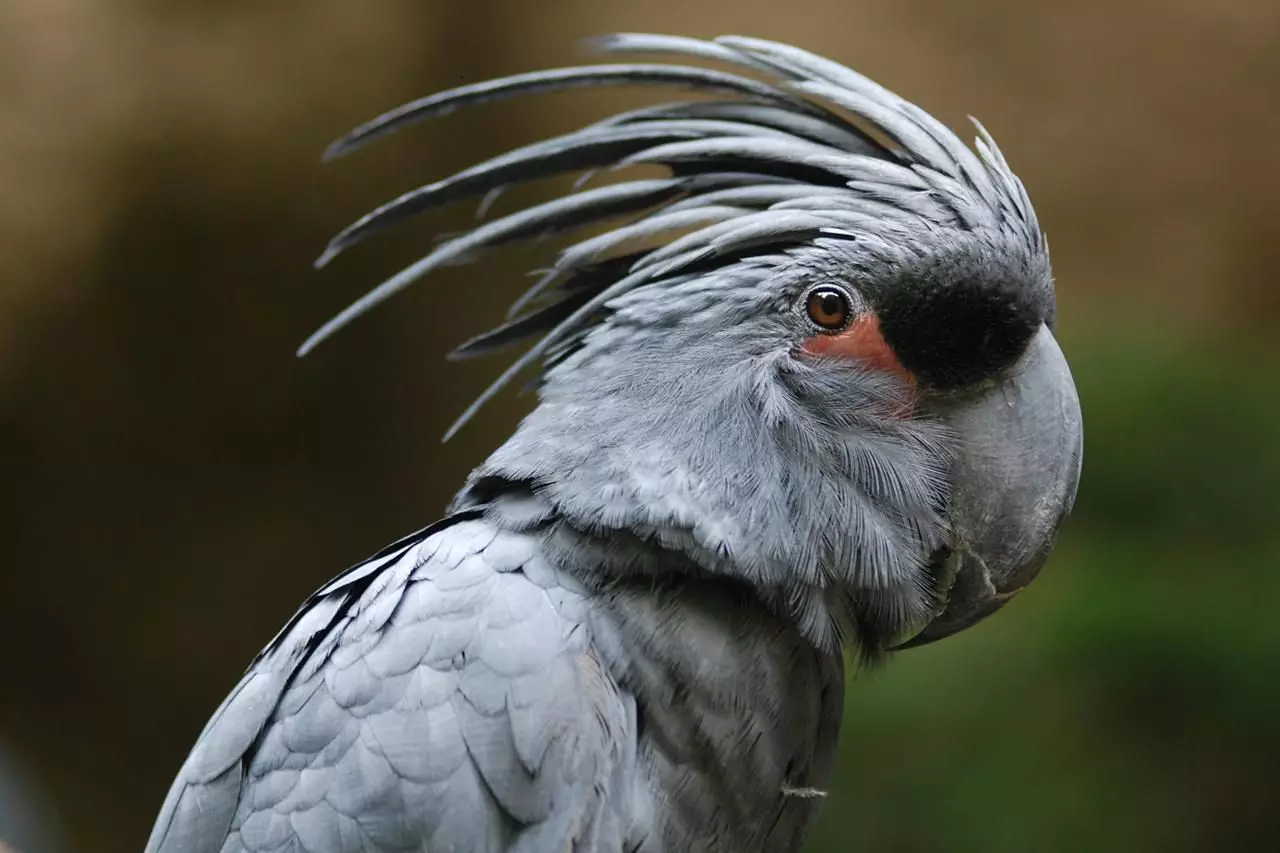The black palm cockatoo, also known as the goliath cockatoo, is a stunning and charismatic bird recognized for its striking appearance and impressive size. It ranks as the largest of the cockatoo species, boasting an impressive wingspan and a distinctive silhouette. However, potential owners should approach this magnificent bird with a realistic understanding of its temperament, care needs, and the challenges associated with its domestication.
These remarkable birds measure between 22 and 24 inches in length, with weights ranging from 2 to 3 pounds, making them notable not just for size but for their striking coloration. Their feathers display a dark smoky gray that can appear blacker in certain lighting, accentuated by vibrant red patches of bare skin on their cheeks that become even more vivid when the bird is excited. The black palm cockatoo’s formidable beak, the largest among parrots after the hyacinth macaw, is intricately designed for cracking hard nuts and presents a uniquely intimidating presence due to its size and strength.
The black palm cockatoo is, unfortunately, monomorphic, meaning that it is nearly impossible to visually distinguish males from females without genetic testing or surgical intervention. As a result, prospective owners must be prepared for these complexities if they want a specific gender.
As social creatures, black palm cockatoos flourish in interactive environments. These birds exhibit a strong need for regular socialization, which feeds into their overall well-being. In natural settings, they generally occupy small groups, often limited to six individuals, and pair for life. This monogamous tendency can manifest in captivity as a strong bond with their human caretakers, although their affection is not comparable to that of other more cuddly companion birds.
They thrive in large cages, which should ideally measure at least 10 feet long, 6 feet wide, and 6 feet high. If this space cannot be provided, it may be worth considering smaller cockatoo breeds that could suit the owner’s living situation better. Moreover, it is essential that these birds are not isolated for extended periods; frequent human interaction is crucial since they can become distressed if left alone for more than eight hours a day.
The dietary needs of the black palm cockatoo also require careful consideration. These birds naturally feast on palm fruits, nuts, and tree seeds in their wild habitats, necessitating a balanced diet to maintain their health. Captive bred birds should be given a diverse array of high-quality pellets and fresh fruits and vegetables, supplemented occasionally with nuts—albeit in moderation due to their high-fat content. Facility owners must also be vigilant about avoiding harmful food items like chocolate or avocado, which can be toxic to birds.
Maintaining a healthy weight is another challenge. Large birds like the black palm cockatoo are prone to obesity, and attentive monitoring of their food intake and exercise level is necessary. Regular mental and physical stimulation—such as supervised out-of-cage time and interactive toy play—will help maintain their robust health and fulfilling lifestyles.
Training a black palm cockatoo can be a rewarding endeavor, given their intelligence and social nature. With time and positive reinforcement, these birds can learn an array of tricks and even some vocal commands. They rank among the best talking cockatoos and can mimic sounds and phrases with clarity. Engaging them in consistent training not only fosters obedience but also helps stave off behavioral problems such as feather plucking and excessive screeching.
It is essential to note, however, that due to their size and strength, this cockatoo species is best suited for experienced bird owners. Their vigorous presence and loud vocalizations can be disruptive, making them ill-equipped for apartment living or homes with noise sensitivities.
The black palm cockatoo emerges as a truly captivating bird, combining beauty, intelligence, and unique behaviors. However, prospective owners must fully gauge the extensive commitment required, from their social needs to diet and training. The allure of keeping such an extraordinary creature can only be celebrated when backed by preparation and willingness to invest the necessary time, effort, and resources.
Seek out reputable breeders or rescue organizations if you are set on welcoming a black palm cockatoo into your home. As with any pet, proper care, social interaction, and a comprehensive understanding of its needs will ensure that both the bird and owner can enjoy a rewarding and enriching relationship for many years to come.

